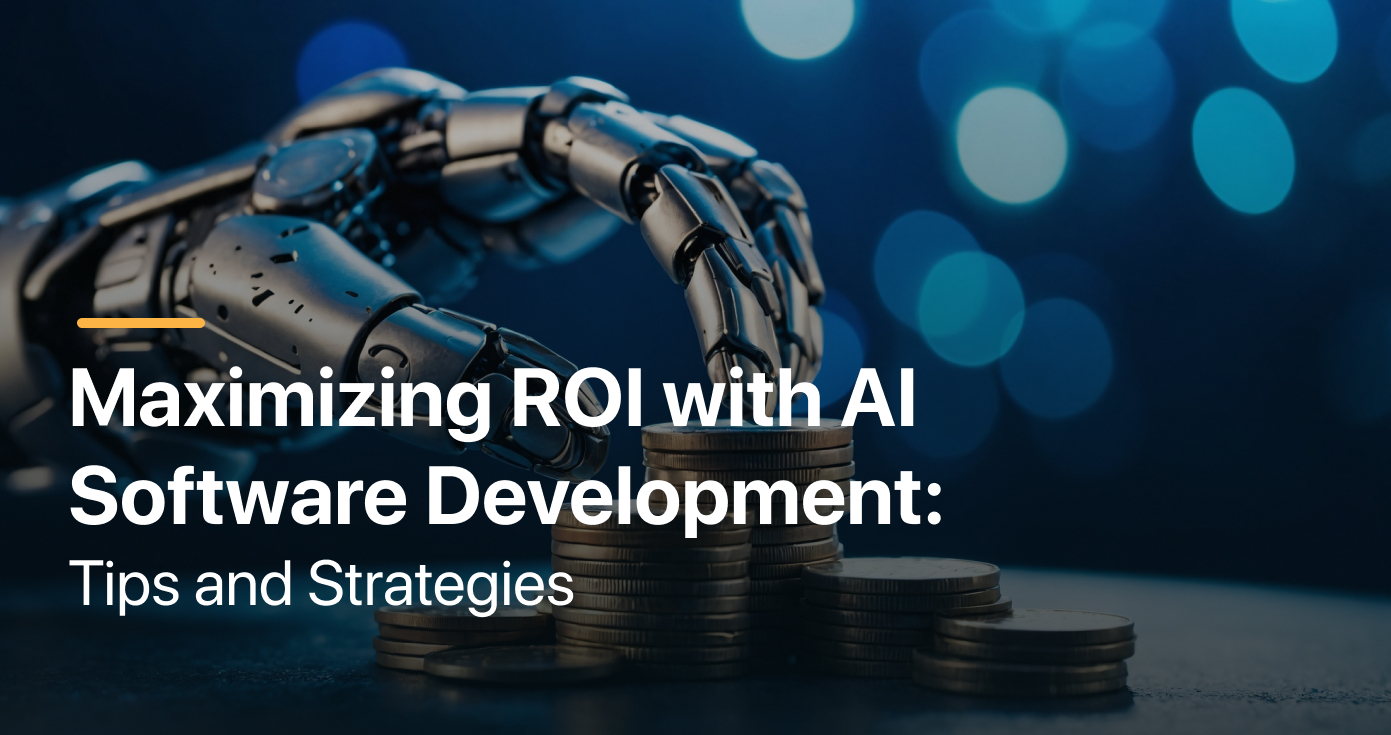AI software development services have emerged as critically essential services for any organization that intends to adapt to the fast-changing technological environment for higher returns on investment. Today, corporations actively approach AI development companies to acquire state-of-the-art solutions, so the demand for custom AI software development services rapidly grew. This article establishes that artificial intelligence has become critically vital in application development services across various organizations through increasing operational efficiency and even transforming the flow of customer experiences.
In this article, there is a focus on the essential approaches and guidelines in this rather volatile sphere to help organizations achieve the maximum impact of ROI with AI software development to improve their competitive advantage.
Defining ROI: Starting with the Basics!
ROI, or return on investment, in software development therefore describes the degree or extent of profitability or efficiency of an investment put into developing software or an application. It measures the amount of profit procured from such an investment in excess of the investment cost. In the context of software development, ROI can be assessed in various ways:
- Cost Savings: Find out how much money could be saved or earned with the software in relation to development and maintenance costs.
- Increased Revenue: Determine how much more is made from direct usage or application of the software, new sales, or the retention or expansion of the customer base.
- Efficiency Gains: Assess the enhancements of its quantitative or qualitative outputs or the efficiency or procedural changes that the software supports.
- Competitive Advantage: Evaluate whether goals related to strategy advantages over competitors, including faster time to market, better product qualities, or improved customer satisfaction, were achieved.
- Long-Term Value: Look at the future value and return on value of the software over the product’s lifecycle, its flexibility, and the continuous re-evaluation of the possibility of new uses.
ROI in software development is a compelling indicator that is used to convince stakeholders, such as investors, company executives, and project managers, as well as to determine the potential projects to invest in and the future prospects in the development of certain software products.
Key Tips and Strategies to Maximize ROI with AI Software Development Services:
Here are key pointers outlining tips and strategies to maximize ROI with AI software development:
1. Define clear objectives:
- Identify concrete objectives and expected results from the production of AI software.
- Ensure that objectives are related to business goals, which may include, for example, cutting costs, increasing sales, or enhancing clients’ satisfaction.
2. Choose the right AI projects:
- Choose specific AI initiatives that are based on the organization’s business objectives and have high chances of yielding a high ROI.
- As projects take time and resources, they also need to be prioritized according to how feasible they are, how effective they would be in achieving the goals, and where they stand in terms of how well they fit the organization’s capabilities.
3. Focus on Quick Wins:
- It’s rational to begin with those AI projects that can produce first results with high tangible benefits as soon as possible in development.
- Proactively incorporate agility methodologies that would allow the making of small adjustments in response to an organization’s feedback and the initial outcomes of the evaluated solutions.
4. Data Quality and Accessibility:
- Guarantee the sharing of only high-quality data and ensure suitable curation of data to be used in artificial intelligence model training and for use in real-world applications.
- Integrate proper data governance and management practices to ensure the data’s quality.
5. Scalability and Flexibility:
- Ensure AI solutions can be expanded for the future since the needs of a business are always changing and the company is growing.
- Architect modularity and clouds that enable the scalability of the system as well as its flexibility.
6. Continuous Monitoring and Optimization:
- Establish ways through which the performance of the AI models deployed can be checked and improved continually.
- Feed back into the AI system as well as employ analytics to enhance the performance of AI and the overall ROI.
7. Integration with Existing Systems:
- AI solutions are to be easily interfaced with existing IT systems and should work in synergy with the current business models.
- One must optimize system coupling that is his or her choice, interoperate with other choices, and be compatible with them to prevent redundancy and interruptions that always slow down the process.
8. User-Centric Design:
- Improve the accessibility of the AI software and focus on users’ needs to increase usage and satisfaction.
- Engage the end-users to get their feedback about the AI applications to enhance them in order to match the expected users’ results.
9. Compliance and Ethics:
- Follow legal and ethical standards in the design and implementation of AI systems.
- Show the stakeholders that the company is upright and is using AI practices responsibly.
10. Measure and communicate ROI:
- Introduce precise indicators and measures to more accurately assess the ROI of initiated AI projects.
- Inform stakeholders on a frequent basis about the results and accomplishments in order to justify the AI-related investments.
Thus, by investing time and money into using the aforementioned tips and strategies to facilitate AI software development, organizations will be able to experience an increased return on investment and gain a competitive advantage in their niche markets.
Conclusion:
In conclusion, the landscape of AI software development services offers boundless opportunities for businesses aiming to enhance efficiency, drive innovation, and achieve substantial ROI. By partnering with a reputable AI development company that specializes in tailored AI software development solutions, organizations can harness the transformative power of artificial intelligence.

